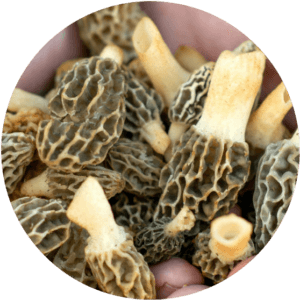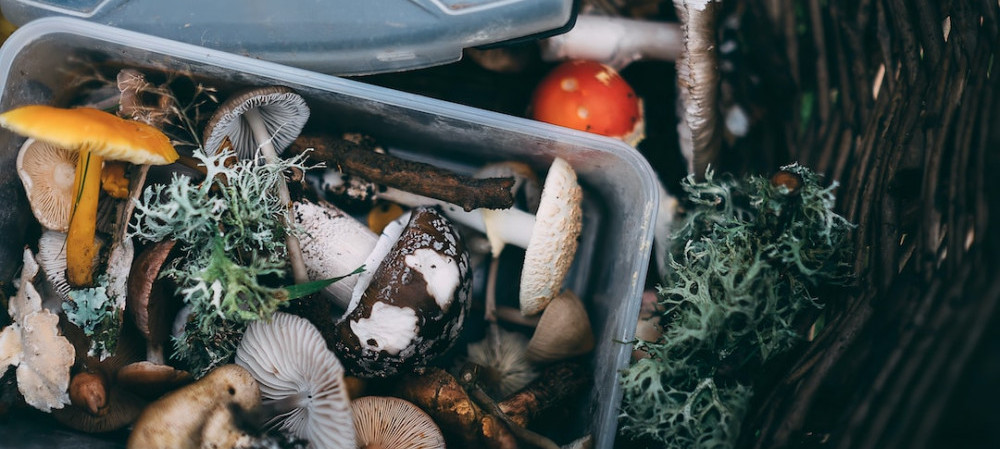I earn commissions if you shop through the links below at no additional cost to you.
Last Updated on March 24, 2023 by Jeremy
What is seasonal foraging? Foraging, something heard of in tales of yore, has been making a steady climb in popularity. What used to classify a person as a ‘Hippie”, has now become trendy. And for good reason.
Earth has lots of edible plants and mushrooms out in the vast wilderness waiting to be foraged. But with the change of seasons comes new hope and opportunity to find little treasures.
So what is seasonal foraging then, and what are some edible morsels to look out for?
Spring
After a long, cold winter, spring (time) brings hope and renewal, as well as rebirth or rejuvenation to an otherwise dreary landscape.
The bursts of green everywhere from the leaves budding out on the trees to the fresh, crisp smells to the green grass.
Plants become alive again, resurrected from their winter slumber by the bright warm sun.
Dandelions, pollinators and bees first food source, grow in the spring dotting little suns against the sea of green.
Springtime is when to forage for tender greens and leaves as well as some mushrooms.
Here is a list of springtime wild edible plants and mushrooms:
- Chickweed – A common plant found in yards in early spring.
- Dandelion – The whole plant, minus the seed puffs, are edible.
- Plantain – A common “weed” that is both delicious and medicinal. Bee sting reliever.
- Clover – Found in many yards; the flowers make a sweet addition.
- Watercress – Found in or near running water, or in very wet soil; has a peppery flavor.
- Nettles – Used for soups, quiche, or similar to spinach. *must use gloves when handling and you must cook the nettle first to get the sting out.*
- Fiddleheads – Baby ostrich fern still firmly coiled up. Similar to asparagus, and must be cooked.
- Oyster Mushrooms – Grows on trees, stumps or fallen logs in clumps.
- Morels – To find, look in areas where forest fire was previous.

- Spruce and Fir tips – Fresh bright green tips are best to pick when just emerging from their brown husks and still fairly tight.
Summer
The days are longer, hotter and full of the floral scents of flowers. The birds are happily chirping away, squirrels are chasing each other and the hiking and foraging opportunities are endless.
The plants have put a lot of energy into the top part of the plant for most of the spring, to work up to producing flowers, then later, seeds or fruit.
More common foods to forage are:
- Blueberries, huckleberries – woody shrubs.
- Ground cherries – related to tomatoes; eaten when ripe.
- Brambleberries – raspberries, blackberries, thimble berries and wild roses.
- Elderberries – used for jellies, syrup, pies or wine.
- Cattails – common in most wetlands.
- Mints – most recognized by its square stems, opposite leaves and flowers with 5 petals that form an upper and lower lip.
- Bee balm – member of the mint family along with Horse balm.
- Lemon balm – when crushed, leaves smell distinctly of lemon.
- Rose – all parts are edible and can be used raw in salads, infused in vinegar, or in a jam.
- Fairy Ring Mushroom – grows primarily in grassy areas or in vegetation close to old tree stumps.
- Field / Meadow Mushroom – found in fields or meadows across North America; look after rainfall as these mushrooms love humidity.
- Chicken-of-the-Woods – also known as Sulphur Shelf mushrooms, these are found growing on hardwood trees (dead or alive) such as Oak trees.
- Chantrelle – found in coniferous forests growing in clumps, or at the base of mountain ridges in lush woodland.
Have a look at this YouTube video from Bob Hansler I found that provides a demonstration of southern foraging highlighting many of the edibles and useful plants and wildlife along the way.
Fall
The days are starting to become loner, the temperature has a crisp bite to the air and the birds are starting to migrate south. But, with how bleak it may start to look, there is still plenty of color left.
The deciduous trees are changing color from green to orange, yellow and red.
The flowers have changed to seeds to ensure the next generation. The roots grow deep to wait out the winter.
Have a look at these foods ready for foraging:
- Cattails – fall is best to harvest the root stalks.
- Rose Hips – found all over North America, rose hips are used raw or steeped for tea.
- Acorns – found throughout the Northern Hemisphere, can be used for protein source. One ounce of nut meat contains a little over 100 calories. No wonder squirrels get chunky!
- Dandelion – the roots are nutrient dense and can be used in tea or cooked.
- Clover – flowers are great in salads.
Some mushrooms like Chantrelle, Oyster and Chicken-of-the-Woods can be foraged in the fall as well.
Winter
Winter – the season most complain about. The cold temperatures and snow aren’t the best for foraging, but don’t despair, there is hope.
Throughout the wonderland that is winter there are many options that is sure to add many nutrients to your pantry.
Here are the winter foraged items:
- Rose hips – full of vitamin C. Use in jams or jellies or dried, then powdered.
- Nettle – persistent plant makes it hard to remove. Can dig under snow to uncover nettles growing just above soil level.
- Pine needles – needles can be brewed for tea; the inner bark, cambium, can be dried to make a flour used in baked goods.
- Spruce – needles can be used for tea similar to pine.
- Cedar – used by indigenous people for thousands of years as a tea. Used to ward off scurvy and has anti-inflammatory properties which boost immunity thus reducing the symptoms of cold and flu. Prepare the same as spruce and pine.
- Cattails – their roots provide a delicious starch which can be cooked and eaten as is or turned into flour.
- Pine nuts – found in pine cones, they can be eaten raw, cooked, tossed in many dishes, or made into pesto.
* Norfolk Island pines, Lodge pole pines, and Ponderosa pines are all TOXIC to humans *
- Turkey Tail Mushrooms – most medicinal which makes us for its undesirable flavor. Abundant in anti-oxidants, natural immune boosters and contains polysaccharide K, a cancer adjunct therapy.
- Oyster Mushrooms – found on dead or decaying Oaks, Aspens, Birches and Beeches, pending on the severity of the winter.
- Chaga – found in the colder section of the Northern Hemisphere growing exclusively on Birch trees. Chaga has been effectively treating cancer for thousands of years.
Have a look at this winter foraging video I found on YouTube:
Things to Consider Before Foraging
Some things you should consider when foraging are:
- Tell someone where you are going
- Dress for the weather and elements
- Pack water and snacks
- Be aware of wild animals
- Make sure you have all supplies
- Don’t forage around highways or busy roads
- Know the area when foraging
- Always use a reference guide or manual
- Stay away from areas that have been sprayed
- Be mindful of nature – what you bring in, take out
Conclusion
Foraging for plants and mushrooms, regardless of season, will always guarantee an item or two to the pantry. Even if you find nothing, you still went outside for a walk within nature.
Either way, don’t forget to be prepared for your adventure by taking your field guides and reference materials along with you. For example, I have found a very useful book on Amazon that will help identify those wild edible foods that our planet has to offer.
*Before clicking Amazon Links, please read: Affiliate Disclosure – Everything Nature and More because, as an Amazon associate, I earn from qualifying purchases. *
What foods do you like foraging for? Any tips or tricks you use? Please feel free to leave a comment below.
EARTH IS HEART!







I have never foraged for plants or mushrooms. I would never really know what kinds are edible or not. This article was really interesting to read and I will have a look around me the next time ill go for a walk in nature. It would be so nice to find your own herbs and fresh vegetables.
Thank you for your reply. I, too have never foraged for wild mushrooms and plants, but am always studying reference materials and researching. I plan to forage all over the mountainside come this spring for Morels. The first for me and hopefully will inspire an article.